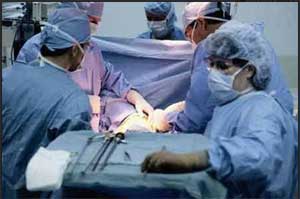- Home
- Editorial
- News
- Practice Guidelines
- Anesthesiology Guidelines
- Cancer Guidelines
- Cardiac Sciences Guidelines
- Critical Care Guidelines
- Dentistry Guidelines
- Dermatology Guidelines
- Diabetes and Endo Guidelines
- Diagnostics Guidelines
- ENT Guidelines
- Featured Practice Guidelines
- Gastroenterology Guidelines
- Geriatrics Guidelines
- Medicine Guidelines
- Nephrology Guidelines
- Neurosciences Guidelines
- Obs and Gynae Guidelines
- Ophthalmology Guidelines
- Orthopaedics Guidelines
- Paediatrics Guidelines
- Psychiatry Guidelines
- Pulmonology Guidelines
- Radiology Guidelines
- Surgery Guidelines
- Urology Guidelines
High bleeding risk calls for blood transfusion in inpatient plastic surgery procedures

High risk of bleeding in inpatient plastic surgery procedures makes blood transfusion important for the patients undergoing such procedures, pointed out a study published in the journal Plastic and Reconstructive Surgery.
The study outlined the necessity of blood transfusion due to the prevalence of bleeding in inpatients plastic surgery procedure such as breast reconstruction surgeries and also it identified those procedures which are at a high risk of bleeding.
In this study, the authors retrospectively identified patients who suffered from postoperative bleeding complications from 2010 to 2015 using the National Surgical Quality Improvement Program database. This is defined by the National Surgical Quality Improvement Program as the need for transfusion of at least one unit of packed or whole red blood cells. Patient characteristics were described using summary statistics, and the National Surgical Quality Improvement Program and univariate analysis of patient characteristics and bleeding complications were performed.
Key findings of the study
- Overall, 1955 of 95,687 patients experienced bleeding complications.
- Patients with bleeding complications were more likely to be diagnosed with hypertension, have a longer total operative time, and have a previously diagnosed bleeding disorder.
- The most common primary plastic surgery procedure associated with bleeding complications was breast reconstruction with a free flap, and breast reconstruction with a pedicled transverse rectus abdominis musculocutaneous flap had the highest rate of bleeding.
- A return to the operating room was required in 539 patients who suffered a postoperative bleeding complication.
- Patients with a preexisting bleeding disorder were more likely to be diabetic, have a lower preoperative hematocrit, and have a longer operative time. In addition, these patients were more likely to suffer from other nonbleeding complications.
Based on the findings the authors concluded that higher prevalence of bleeding makes blood transfusion necessary in inpatient plastic surgery procedure, especially in breast reconstruction surgery. Also, the authors added that patients undergoing combined procedures—specifically, breast oncologic and a reconstructive case are at a higher risk of bleeding-related complications.

Disclaimer: This site is primarily intended for healthcare professionals. Any content/information on this website does not replace the advice of medical and/or health professionals and should not be construed as medical/diagnostic advice/endorsement or prescription. Use of this site is subject to our terms of use, privacy policy, advertisement policy. © 2020 Minerva Medical Treatment Pvt Ltd